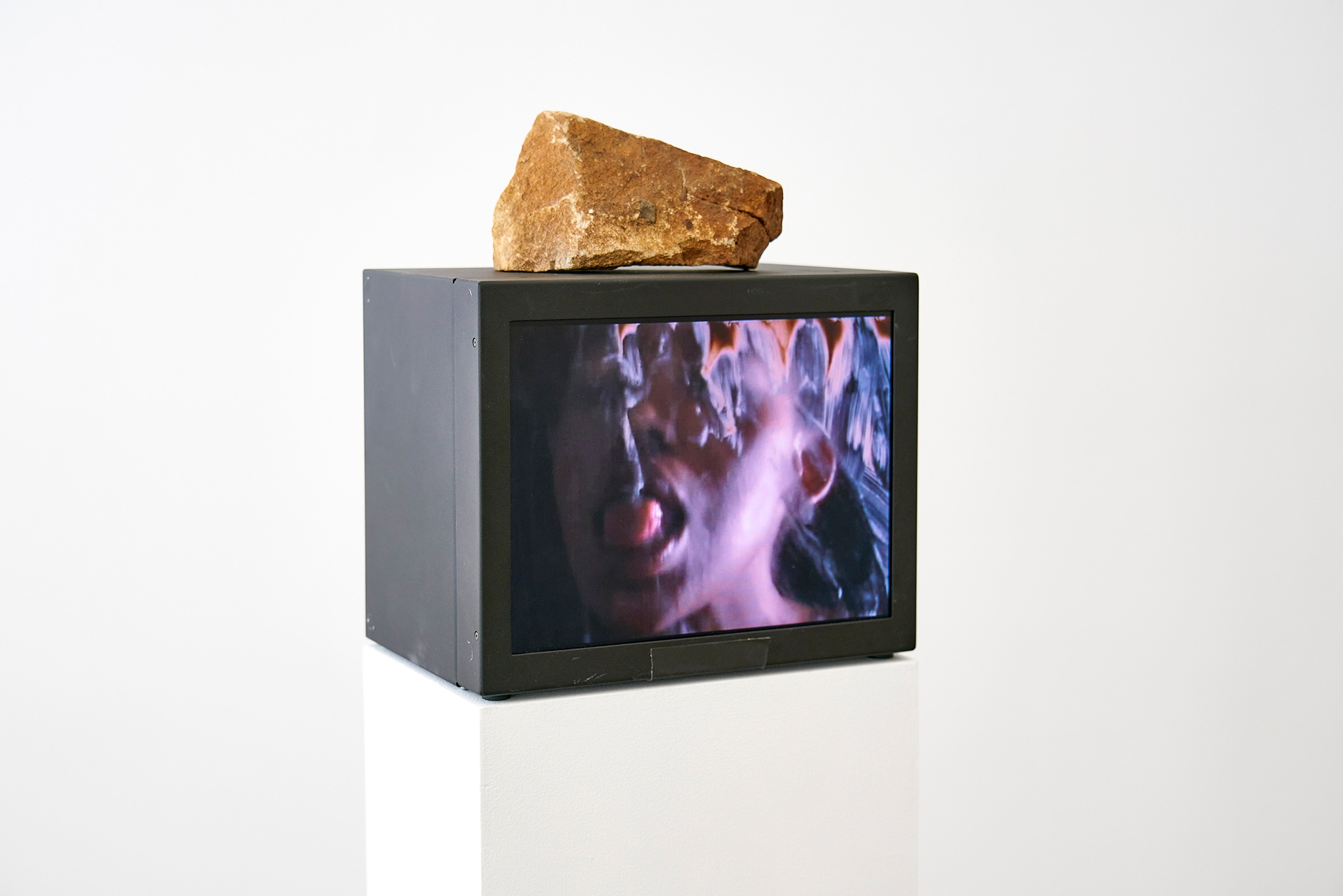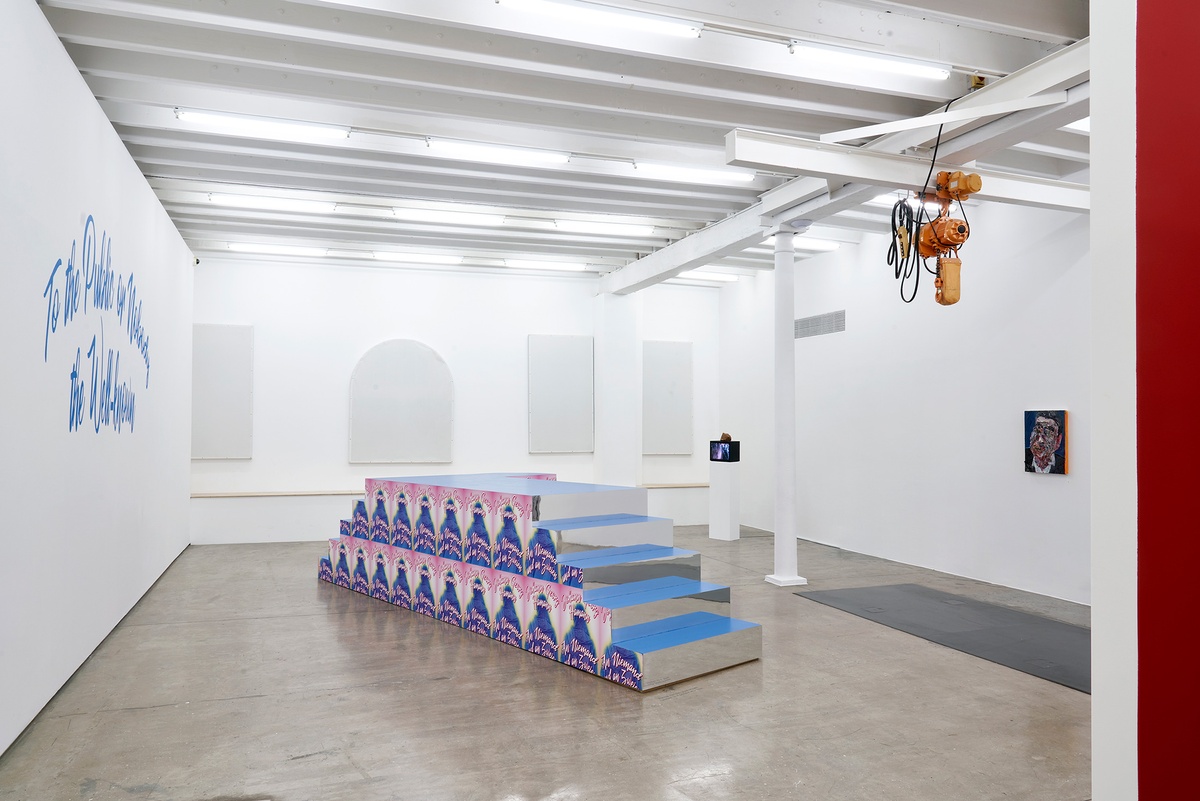Dineo Seshee Bopape

In a love supreme, the artist enacts a sensual labour, slowly licking chocolate from a pane of glass. Where the film first appears largely abstract, the nature of the erotic task concealed, an image slowly becomes apparent, consuming the opacity that disguised it. The screen, performing like a mirror, becomes a surface on which to enact self-love; to clean, to tend, to adore. In place of wounds, we find chocolate. Where this substance threatens anonymity, the artist eats it away. The action is accompanied by John Coltrane’s seminal 1964 recording of a love supreme. A mountain rock is placed atop the screen (when the work is shown in Cape Town, it is pale brown Table Mountain sandstone, like that included in the exhibition You to Me, Me to You at A4). Bopape toys with the tired tropes that persist to describe black bodies – unmasks these tropes in a world of her own making. Speaking to Ross Simoni (2021), the artist spoke of her work as exploring “my place in the world in relation to, not in any order, colonialism, patriarchy, ethnocentrism, racism, classism, capitalism, feminism, MTV, media, plants, soil, space, beauty, water, ethics.”
b.1981, Polokwane
Dineo Seshee Bopape assembles the personal out of the public, inscribing individual intimacies in commonplace materials, from found objects, sounds and images to more elemental matter: clay, soil, ash, wood. Land is central to her practice, in works which hold both the histories of contested spaces – those of colonial conquest and capitalist extraction – and earth’s transcendental significance in productive tension. These considerations of memory as both metaphysical and material impression more often pair the organic and fabricated, analogue and digital, in installations of poetic discord that are multilingual, transcending singularity. Speaking of her “hunger for elsewhere,” the artist addresses the globalisation of the art market, the statelessness of artists, embracing “hyperbole,” where a shifting self-image offers a means with which to enter alternative worlds.


